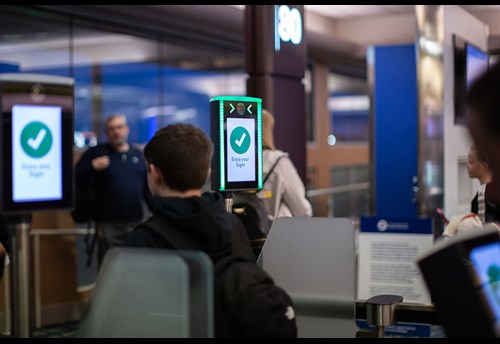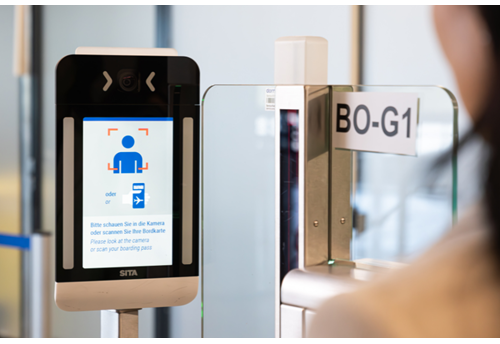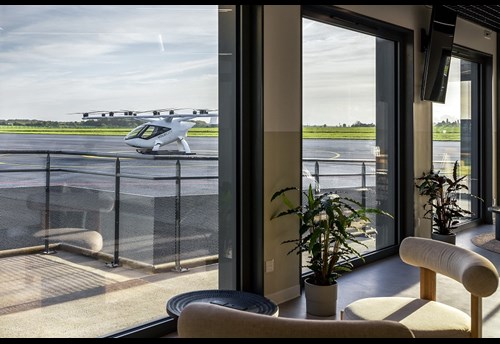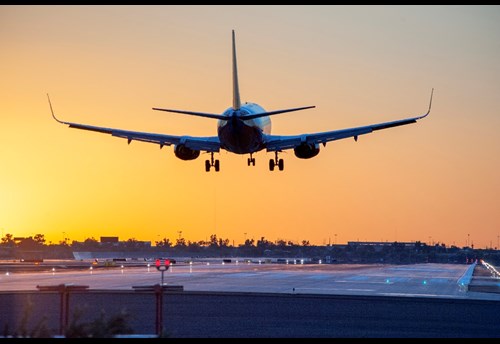To someone who works in innovation, it’s very reassuring to look at the results in this year’s SITA Air Transport IT Insights survey. It shows that airlines and airports are both highly engaged in exploring emerging technologies. Priorities may differ slightly between them, but overridingly it’s clear that they’re both completely focused on automating and streamlining the journey for passengers.
AI: set to shape aviation’s future
This is an exciting reveal, and it bodes well for the future experience of passengers. The survey shows that when it comes to new technology, the number one focus for investment by airlines continues to be Artificial Intelligence (AI). It’s also attracting more investment from airports. Both plan to use it to streamline the passenger’s journey and make the experience a much more seamless and enjoyable one.
What’s obvious to me from the Insights results is that AI is no longer seen as a nice to have. For any airline or airport with a serious view of future passenger engagement, the passenger experience and operational efficiencies, then AI is a necessity. The trend is marked. As many as 44% of airlines now have a major live AI program in place, up from 32% last year. A further 45% are running a pilot. By 2022, a total of 89% of airlines will have some sort of AI program in place. That shows the serious intent of aviation to reap the benefits of AI.
Virtual agents and chatbots: making service fast and personal
The most common uses of AI in airlines are virtual agents and chatbots, according to the SITA Air Transport IT Insight results. There are similar solutions in airports too. These tools are primarily being adopted to personalize passenger information and manage customer service relations. Airports also want AI for automatic scheduling such as maintenance. This year 48% of airports said they’d have AI in place for this very use.
Passenger communication and predictive analytics
For passenger communication, airlines have a distinct advantage over airports. They get access to passenger contact details through booking, check-in and so on, so they can communicate with passengers at the outset through mobile devices and chatbots. Airports can also benefit from direct passenger contact, though in their case this typically depends on passengers downloading apps or logging into the airport Wi-Fi.
The primary focus for AI in airports, and a secondary one for airlines, is predictive analytics. The better airports and airlines can understand their customers and marketplace, the more efficiently they can fulfill demand. Predictive analytics addresses a key operational issue for airports who want to maintain a continuous flow of aircraft and passengers by avoiding bottlenecks and unnecessary queues, both landside and airside.
Data lakes: to avoid a data swamp
AI depends on aggregating and analyzing data of all kinds to carry out predictions. It’s driven the creation of data lakes or centralized repositories to store both structured and unstructured data. A huge 70% of airlines have now implemented a data lake strategy or are currently developing one. At 59%, airports are not far behind although most are looking for more efficient data storage as their first port of call.
Blockchain’s potential for airlines
I’m excited to see airlines recognizing the potential of leading-edge technologies such as blockchain. The Insights survey notes that it’s now a top tier area of focus.
Used to record trusted data across a large number of digital stakeholders, blockchain will make it easier for airlines to maintain and distribute both operational data and passenger-specific information such as loyalty records and ticketing. Some 72% of airlines have investment plans in blockchain: 15% of them in a major program and 57% in R&D by 2022.
BI: a focus for airports
As they embrace emerging technologies, airports are keen to adopt advanced IT for their core business in the day-to-day management of moving passengers and assets.
One of these is business intelligence (BI). The SITA Air Transport IT Insights survey found it to be the number one investment area for airports. Today 56% of airports have a major BI program in place; 33% have R&D programs. By 2022, BI will be a priority for 89% of airports.
Biometric screening: taking off at an airport near you!
For airports, biometrics is proving to be another strategic area of investment. Again, it’s central to their desire to enhance future day-to-day operations and passenger flow.
Biometrics plays a key part in streamlining passenger flow by facilitating identity management. Because of this, a huge 85% of airports will have biometrics programs or R&D in place around the technology by 2022. Self-boarding gates, using biometrics linked to identity documentation, are clear target areas for airports. But so too is the use of biometrics for access to services such as lounges in a bid to enhance customer service and promote loyalty.
Emerging tech: the answer to a better journey of the future
With air passenger numbers set to double to 8.2 billion in 2037 (IATA), airlines and airports have a huge challenge ahead to cope with capacity crunches. At the same time, they need to streamline the passenger journey and make the whole passenger experience more enjoyable.
Airlines and airports may be looking at new technology from different perspectives: airlines globally, and airports locally. But the vital takeaway for me from SITA’s latest IT Insights survey is that they’re both highly engaged in exploring and embracing emerging technologies – individually and in collaboration. They’re clearly united in deploying technology to shape the journey of the future, drive greater aviation efficiencies and keep passengers happy and informed at every step.
Learn more about the Air Transport IT Insights report











0 Comments